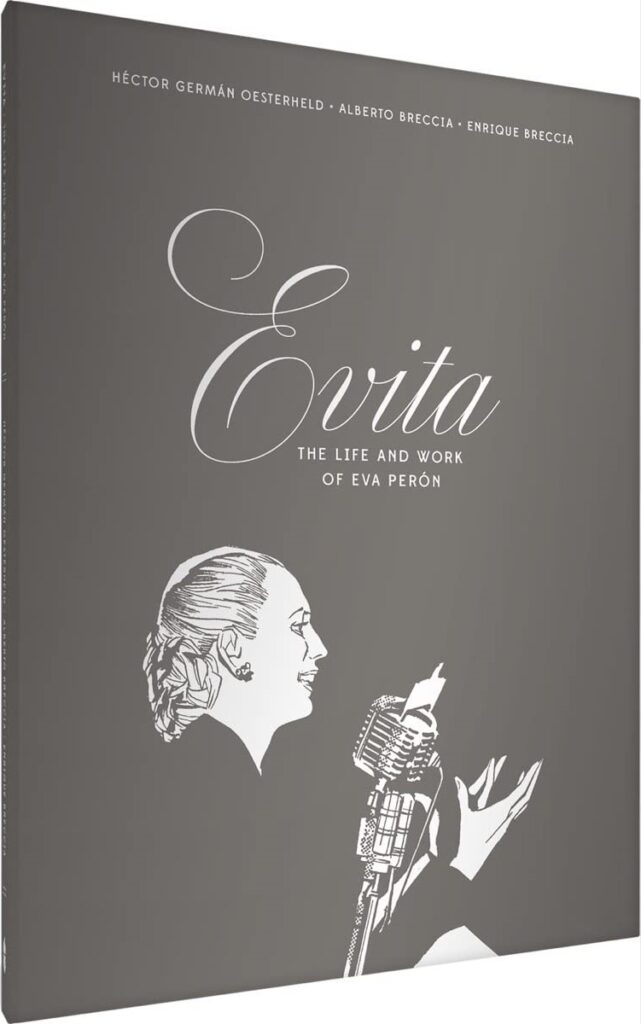
Fantagraphics continues their series of Alberto Breccia releases with this graphic biography of the polarizing Argentine icon, Eva Perón, popularly known as Evita. The book had a troubled start during its production in 1970 due to the political baggage of both Evita and the writer, Héctor Germán Oesterheld, leading to the script being depoliticized by another writer before publication. Three decades later, a comics editor found Oesterheld’s original script in Breccia’s studio, long after both men had passed away, leading to a revised and restored Argentine edition that serves as the basis for this release, the first English translation of the book.
Oesterheld’s script tracks the full life of Evita, but glosses over her early childhood in a couple of pages to begin its primary focus starting at age 16. His story is quite clearly pro-Perón, celebrating her passion for the plight of the common man while avoiding any detractions to her legacy. This reverent approach makes it easy to see why the Argentine government of 1970 would oppose its release in its original form, especially as they maintained their exile of her husband, former President Juan Perón.
While the comic is slight at only 59 pages (out of 72 total pages), it’s so text-heavy that it feels like a full-fledged biography. Unlike the creative team’s similar project immediately preceding this work, Life of Che: An Impressionistic Biography (Fantagraphics, 2022), the script eschews any character text balloons for a fully narrated writing approach, packing nearly every panel with lengthy exposition. As a result, the work reads more like an illustrated biography than a typical graphic novel, with the Breccias’ art merely illuminating Oesterheld’s version of the Evita story rather than taking the creative lead.
As for the black and white art, the father and son pair of Breccias hew to a largely realistic style, utilizing bold brush strokes augmented by Zip-a-tone shading to craft evocative images of Evita’s life. Gone are the impressionistic flourishes of their Che collaboration, abandoned in favor of art that’s more appreciative of Evita as a real person in recognizable settings. There’s no denying their impeccable draftsmanship, and yet the artwork is so rooted in reality that it paradoxically comes off as a bit lifeless, drained of father Alberto Breccia’s imaginative artistic tendencies so clearly on display in Perramus, The Eternaut 1969, and especially his fully painted and wildly experimental Dracula (all published by Fantagraphics).
The hardcover book is printed in a large, roughly 9” x 12” format that makes the dense text easy to read and allows readers to savor the artwork. The matte and primarily black surface of the cover is a major fingerprint magnet, so uptight collectors should take care to wash hands before engaging with the book. The comic is preceded by a note on its convoluted publication history, and followed by an Alberto Breccia Library timeline, along with lengthy biographies of the three principal creators and the English translator.
Each release in the Fantagraphics Alberto Breccia Library is a cause for celebration, furthering appreciation for this Argentine master cartoonist in the English-speaking world. Evita is particularly notable for its troubled history, making its emergence all the more worthwhile, even though it took over five decades to reach our shores. While so many other books are currently at risk of being banned or edited in our current political climate, it’s especially rewarding to claw one back, finally released from the restrictions of its native land and presented to us for the first time as it was originally intended.